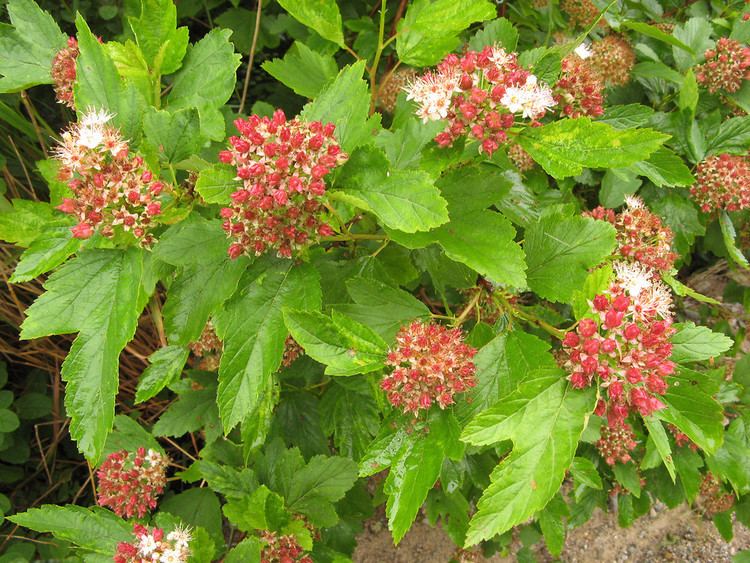Scientific name Physocarpus Rank Genus | ||
Lower classifications Physocarpus opulifolius, Physocarpus capitatus, Physocarpus monogynus | ||
Best flowering shrubs physocarpus center glow ninebark
Physocarpus, commonly called ninebark, is a genus of flowering plants in the family Rosaceae, native to North America (most species) and northeastern Asia (one species).
Contents
- Best flowering shrubs physocarpus center glow ninebark
- Plantipp presents physocarpus opulifolius little angel
- Description
- Diversity
- Synonyms
- Propagation
- Problems
- References
Plantipp presents physocarpus opulifolius little angel
Description

Physocarpus are deciduous shrubs with alternately arranged leaves. The leaves are palmate with 3 to 7 lobes and often toothed edges. The inflorescence is a cluster of bell-shaped flowers with 5 rounded white or pink petals and many stamens. The fruit is a flat or inflated dehiscent follicle. The genus name Physocarpus comes from the Greek for "bladder fruit", referring to the inflated fruits of some species. The common name ninebark refers to the peeling bark of mature branches, which comes away in strips.

P. opulifolius is cultivated as an ornamental plant. Several cultivars have been bred, particularly for foliage of varying colors, including 'Dart's Gold' and 'Luteus', which have yellowish leaves, and 'Monlo' and 'Seward', which have reddish purple foliage.
Diversity
There are six to 20 species in the genus.
Species include:

Synonyms
Propagation
Propagation is by seeds sown as soon as ripe or they can be stored dry in airtight containers in a cool place for up to a year and then sown. Plants can be divided in the early spring, with a sharp spade or even an axe, chopping right through the middle. Softwood and hardwood cuttings are easy to root.
Problems
Garden writers describe few if any problems, but it is not unheard of armies of aphids attacking some varieties.
